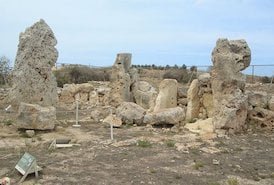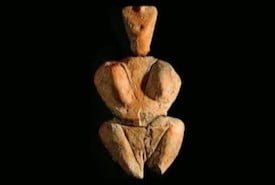

Ta' Ħaġrat Temples
Ta’ Ħaġrat is on the eastern outskirts of the village of Mġarr, roughly one kilometer from the Ta’ Skorba temples. Characteristics of the Ta’ Ħaġrat façade resemble those in the Ta’ Skorba complex.
The excavation of plentiful pottery deposits show that a village stood on the site and predates the temples themselves. This early pottery is dated to the Mġarr phase (3800-3600 BCE).
Ta’ Ħaġrat is built out of lower coralline limestone, the oldest exposed rock in the Maltese Islands. The complex contains two adjacent temples. The smaller temple abuts the major one on the northern side.
The two parts are less regularly planned and smaller in size than many of the other neolithic temples in Malta. Unlike other megalithic temples in Malta no decorated blocks were discovered; however a number of artifacts were found. Perhaps most intriguing is a scale model of a temple, sculpted in globigerina limestone.

The Skorba Temples
The Skorba temples are megalithic remains on the northern edge of Żebbiegħ, in Malta, which have provided detailed and informative insight into the earliest periods of Malta’s neolithic culture. The site was only excavated in the early 1960s, rather late in comparison to other megalithic sites, some of which had been studied since the early 19th century. The site’s importance has led to its listing as a UNESCO World Heritage Site, a listing it shares with six other megalithic temples in Malta.
This later excavation allowed the use of modern methods of dating and analysis. The temple itself is not in good condition, especially in comparison to the more complete temples of Ħaġar Qim and Tarxien. However, the importance of this site does not lie in the actual remains but rather in what was garnered from their excavation.
